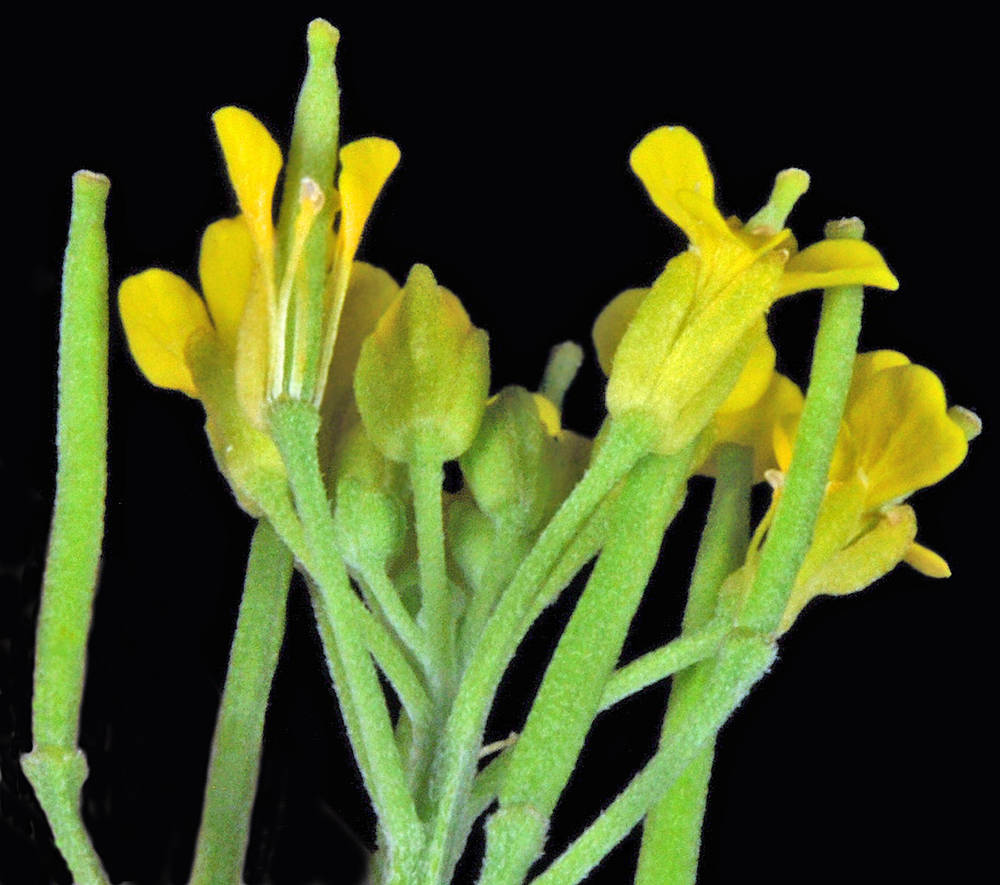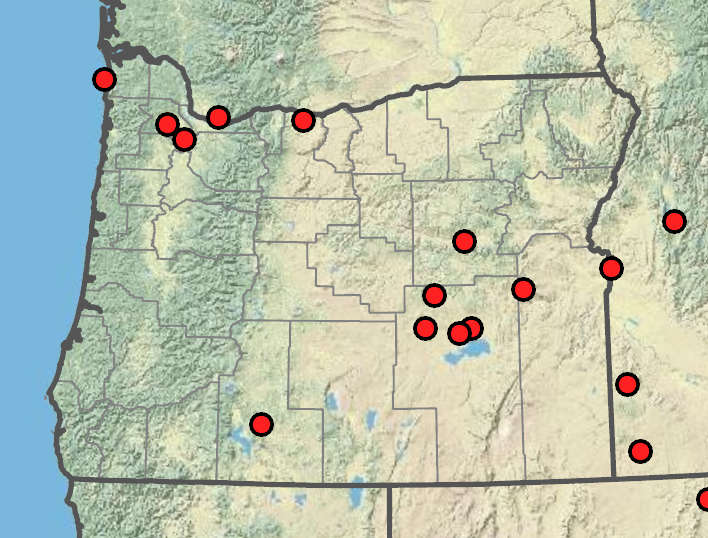Erysimum franciscanum
Erysimum cheiranthoides
treacle mustard, wormseed mustard
(0.7)1.5–10(15) dm, ribbed.
withered by fruiting.
middle and upper lanceolate, linear, or elliptic-oblong; (1)2–7(11) × (0.2)0.5–1.2(2.3) cm;
margins subentire, denticulate, or rarely sinuate-dentate; short-petiolate or sessile.
fruiting pedicels divaricate or ascending, 5–13(16) mm; much narrower than fruits.
sepals oblong, 1.8–3.2 mm;
lateral pair not saccate;
petals spatulate, 3–5.5 × 1.5–2 mm, yellow;
claws 1.5–3.5 mm;
petal tips rounded;
median filaments 2–3.5 mm;
ovules (20)30–55 per ovary;
styles slender, 0.5–1.5 mm;
stigmas entire or slightly 2-lobed.
4-angled; somewhat torulose; (1)1.5–2.5(4) cm × 1–1.3 mm;
valves with distinct midveins, pubescent outside with 3–5-rayed trichomes, densely pubescent inside.
oblong, 1–1.5 × 0.4–0.6 mm;
wings absent.
3–4(5)-rayed.
=16.
Erysimum franciscanum
Erysimum cheiranthoides
Pastures, fields, waste grounds, disturbed areas, dry creek beds. Flowering Apr–Aug. 50–1400 m. BR, BW, Col, Lava, WV. CA, ID, NV, WA; throughout Canada and US; Asia, Europe. Exotic.
Ihsan Al-Shehbaz
- Local floras:
BC,
CA,
OR,
WA
- Local Web sites:
CalFlora,
CalPhotos,
Flora NW,
PNW Herbaria
WildflowerSearch
iNaturalist (observations)
USDA Plants Database
- LBJ Wildflower Center
- SEINet
- Plants of the World Online
- Encyclopedia of Life
- Wikipedia
- Google Image Search



